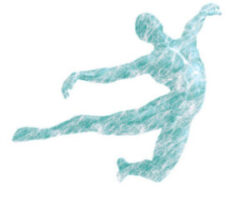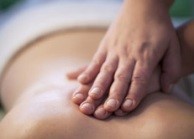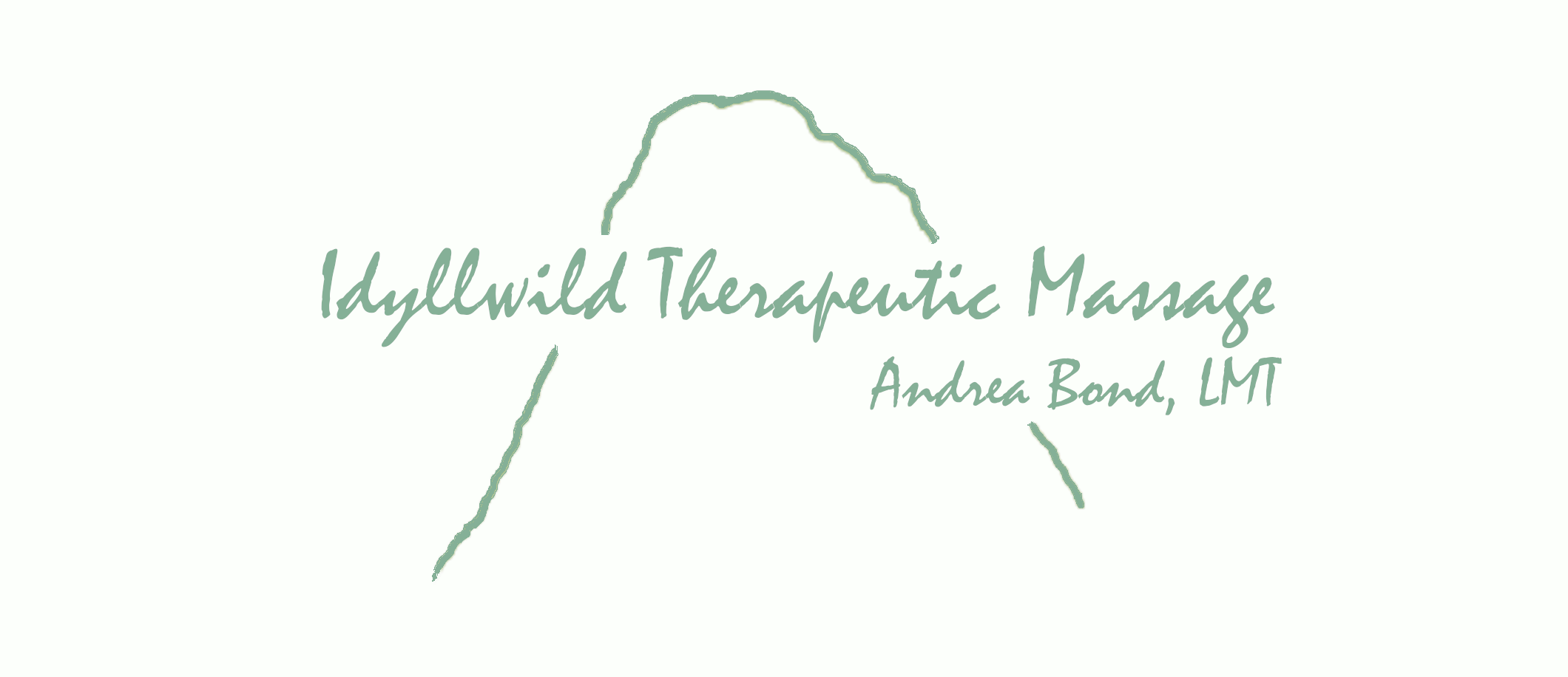Rates
1/2 Hour $ 55
1 Hour $110
90-Minutes $165
2 Hours $220
(Ask about full-time resident discounts.)
Welcome to Idyllwild, PCT Hikers!
Do you need quick targeted work on your feet and calves?
Are you experiencing muscle fatigue or injury?
Is the physical stress showing up in other areas of your body as compensation patterns?
Let me know what you need.
I have added 1/2 hour sessions just for you.

Techniques
Myofascial Release Therapy

We’re in an exciting era of manual therapy, with groundbreaking research about the fascial system being conducted around the world and transforming how we understand and treat this connective tissue system. Fascia, a continuous, vibrating, web-like, 3-dimensional architecture, gives us structural support, allowing us to walk upright with a perfect balance of tension and compression.
Fascia contains a tremendous number of autonomic nerve fibers which gives it the extraordinary capability of sensing and responding to a wide range of input. It senses where we are in space to help keep us balanced as we move about. It receives information about our internal landscape such as our level of hunger, butterflies in our stomach, information about our breathing, our heart rate and emotional state. It senses pressure and touch, tension and compression. And it is deeply linked to our emotions, most notably the fight or flight response.
By treating the fascial system we calm the central nervous system and induce more movement and fluidity in the tissue thereby creating a sense of spaciousness and freedom of movement that is less restricted and painful.
John Barnes’ Myofascial Release utilizes a collection of techniques that focus on the health of the connective tissue (fascia) including light to heavy compressive or sheering hand techniques, decompression techniques (such as gentle neck, arm or leg traction), skin rolling, soft tissue mobilization, gentle rocking as well as guidance through a client’s spontaneous unwinding.
MFR uses no creams or oils.
Craniosacral Therapy
 Craniosacral Therapy is a gentle, hands-on method of evaluating and inducing healthier function within the craniosacral system which is comprised of the membranes and cerebrospinal fluid that surround and protect the brain and spinal cord. Craniosacral Therapy is a deeply relaxing and restorative healing modality.
Craniosacral Therapy is a gentle, hands-on method of evaluating and inducing healthier function within the craniosacral system which is comprised of the membranes and cerebrospinal fluid that surround and protect the brain and spinal cord. Craniosacral Therapy is a deeply relaxing and restorative healing modality.
No creams or oils are used for this treatment.
Neuromuscular Therapy
 Neuromuscular Therapy is a collection of soft tissue manipulation techniques that balance the central nervous system (brain, spinal column and nerves) with the structure and form of the musculoskeletal system. This bodywork focuses on five basic principles—biomechanics, ischemia, trigger points, postural distortion, and nerve entrapment and compression—that are important factors in the body’s physical homeostasis. This therapy is focused, however is not to be confused with deep tissue bodywork. NMT follows a deep understanding that causing pain in treatment does not induce healing and that the right amount of force, without inducing pain is the most beneficial for healing to occur. (No more “no pain, no gain” and instead, “no pain equals gain”.)
Neuromuscular Therapy is a collection of soft tissue manipulation techniques that balance the central nervous system (brain, spinal column and nerves) with the structure and form of the musculoskeletal system. This bodywork focuses on five basic principles—biomechanics, ischemia, trigger points, postural distortion, and nerve entrapment and compression—that are important factors in the body’s physical homeostasis. This therapy is focused, however is not to be confused with deep tissue bodywork. NMT follows a deep understanding that causing pain in treatment does not induce healing and that the right amount of force, without inducing pain is the most beneficial for healing to occur. (No more “no pain, no gain” and instead, “no pain equals gain”.)
Other techniques that can be included:
Circulatory Massage
 Circulatory massage techniques are what most people think of when they hear the word “massage.” These techniques stimulate the nervous system, increase circulation, soothe the mind and feel incredible. They can include light and soothing long-sweeping strokes, kneading and rolling of the skin and surface muscles or vibrational, percussive, and tapping hand movements.
Circulatory massage techniques are what most people think of when they hear the word “massage.” These techniques stimulate the nervous system, increase circulation, soothe the mind and feel incredible. They can include light and soothing long-sweeping strokes, kneading and rolling of the skin and surface muscles or vibrational, percussive, and tapping hand movements.
Massage cream is used to reduce friction on the skin.
Sound Therapy

Sound, music, vibration. We have all experienced the power of music and sound to induce a range of states. Using Tibetan bowls enables the realignment of natural body rhythms. You may add sound therapy as a 5-10 minute compliment to your bodywork or as a stand-alone treatment.
Couples Massage is not offered at this time.
What can I expect?
When you come for your session, we will take time for a brief intake where you will have time to share your history, your current situation and reasons for coming in. Our conversation will guide me to choose the most appropriate direction to take.
How should I prepare for my session?
Please do not apply oils or lotions the day of your treatment.
Coming showered is always encouraged so that any creams or oils that are absorbed into the skin don’t pull in dirt.
Performing MELT method techniques before your treatment is encouraged.
What should I wear?
If you would like to experience a full session of only Myofascial Release Therapy, a sports bra and shorts (for women) or shorts (for men) is preferred.
Most sessions will blend modalities. You will rest under a privacy sheet at all times and can choose to undress to your level of comfort.
What if I experience pain in a session?
Pain never helps in the context of the types of bodywork I practice. Counter to the new science of pain, causing pain does not help. You can still receive deep, focused work without experiencing pain. We will talk about this before your session begins.
